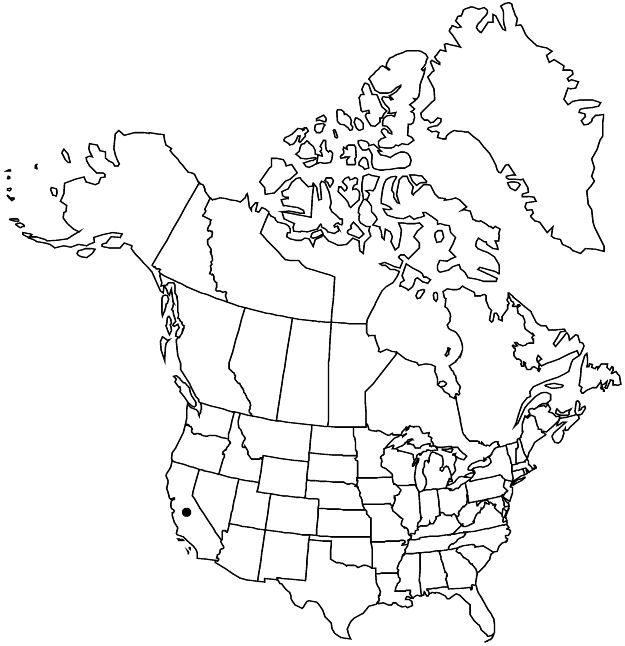Difference between revisions of "Euphorbia terracina"
Sp. Pl. ed. 2, 1: 654. 1762.
FNA>Volume Importer |
imported>Volume Importer |
||
| (One intermediate revision by the same user not shown) | |||
| Line 35: | Line 35: | ||
|elevation=0–300 m. | |elevation=0–300 m. | ||
|distribution=Calif.;Europe;introduced also in Mexico;s Africa;Australia. | |distribution=Calif.;Europe;introduced also in Mexico;s Africa;Australia. | ||
| + | |introduced=true | ||
|discussion=<p><i>Euphorbia terracina</i> is native to the Mediterranean region of Europe. This species is invasive and spreading rapidly, displacing native coastal scrub in southern California, and has been listed as a noxious weed by that state.</p> | |discussion=<p><i>Euphorbia terracina</i> is native to the Mediterranean region of Europe. This species is invasive and spreading rapidly, displacing native coastal scrub in southern California, and has been listed as a noxious weed by that state.</p> | ||
|tables= | |tables= | ||
| Line 59: | Line 60: | ||
|publication year=1762 | |publication year=1762 | ||
|special status=Weedy;Introduced | |special status=Weedy;Introduced | ||
| − | |source xml=https:// | + | |source xml=https://bitbucket.org/aafc-mbb/fna-data-curation/src/2e0870ddd59836b60bcf96646a41e87ea5a5943a/coarse_grained_fna_xml/V12/V12_1087.xml |
|genus=Euphorbia | |genus=Euphorbia | ||
|subgenus=Euphorbia subg. Esula | |subgenus=Euphorbia subg. Esula | ||
Latest revision as of 19:13, 5 November 2020
Herbs, perennial or biennial, with taproot. Stems erect, unbranched or branched, 10–100 cm, glabrous. Leaves: petiole absent; blade linear, linear-lanceolate, oblong-elliptic, or obovate, 4–50 × 2–10 mm, base obtuse or truncate, margins finely serrulate, apex acute, obtuse, or truncate, sometimes mucronulate, surfaces glabrous; venation inconspicuous, only midvein prominent. Cyathial arrangement: terminal pleiochasial branches 2–5, each 1–5 times 2-branched; pleiochasial bracts lanceolate, elliptic or ovate, similar in size to distal leaves; dichasial bracts distinct, ovate to subreniform, base cuneate to cordate, margins finely serrulate, apex acute, obtuse, or rounded, sometimes mucronulate or cuspidate; axillary cymose branches 0–7. Cyathia: peduncle 1–3 mm. Involucre cupulate to slightly turbinate, 1.1–2 × 1.3–1.5 mm, glabrous or puberulent; glands 4, elliptic to trapezoidal, 0.6–0.8 × 1–2 mm; horns slightly convergent to divergent, 1–2 mm. Staminate flowers 15–20. Pistillate flowers: ovary glabrous; styles 1–1.8 mm, 2-fid. Capsules depressed-globose, 2.5–3 × 3–4.5 mm, deeply 3-lobed; cocci rounded to subangular, smooth, glabrous; columella 1.9–2.3 mm. Seeds pale gray, subovoid, 1.6–2.4 × 1.3–1.8 mm, smooth; caruncle boat-shaped, 0.4–0.6 × 0.4–0.6 mm.
Phenology: Flowering and fruiting spring–summer.
Habitat: Edges of cultivated fields and woodlands, roadsides, waste areas, pastures, coastal bluffs, dunes, riparian areas.
Elevation: 0–300 m.
Distribution

Introduced; Calif., Europe, introduced also in Mexico, s Africa, Australia.
Discussion
Euphorbia terracina is native to the Mediterranean region of Europe. This species is invasive and spreading rapidly, displacing native coastal scrub in southern California, and has been listed as a noxious weed by that state.
Selected References
None.